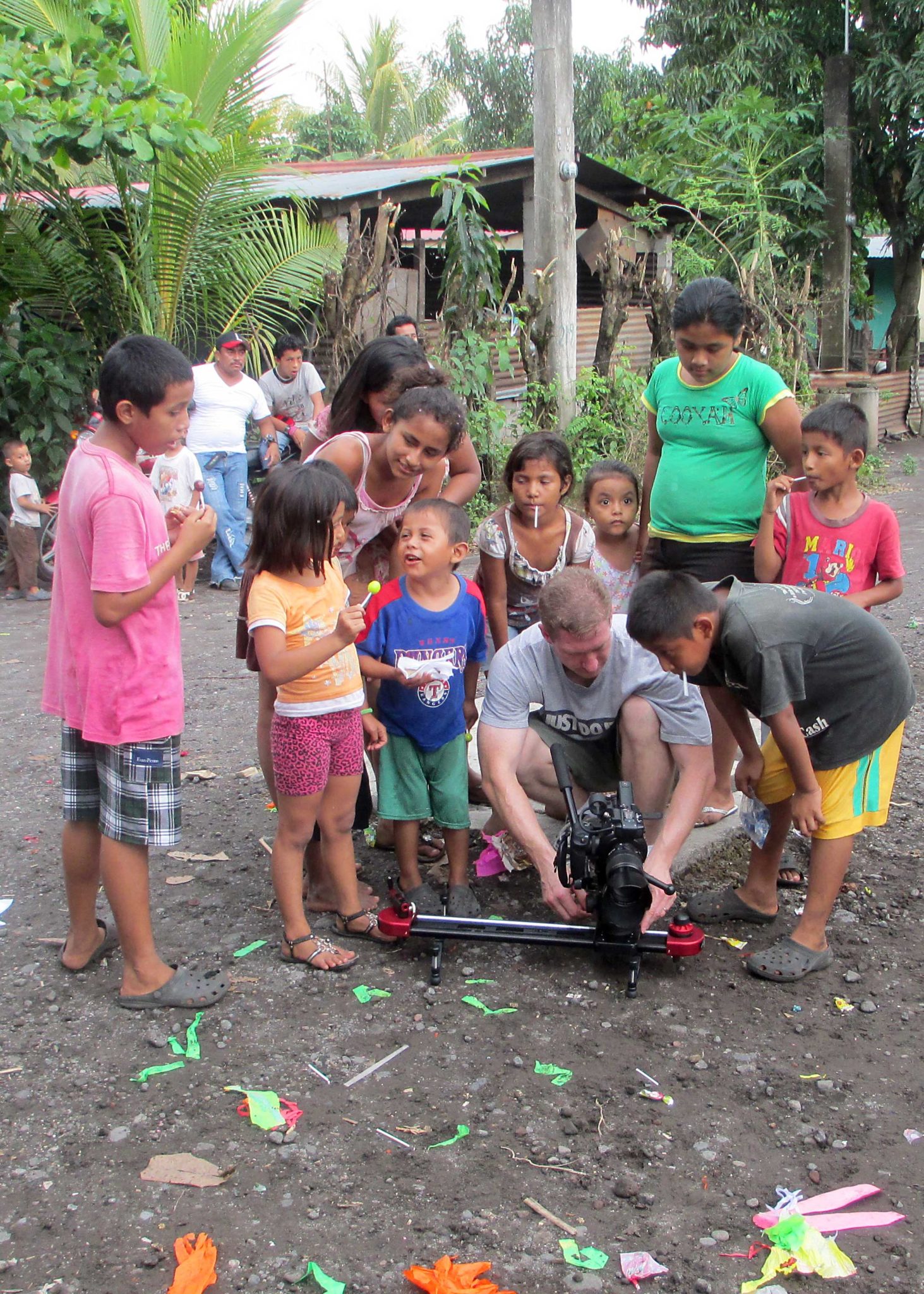The Canon C100 was a weapon of choice for a project I shot nearly a year ago in Guatemala (documenting poverty and the impact on children & families by charitable giving) and then recently in Peru where small form factor and a filmic image were desired. Also, shooting with a documentary format would require both location sound via a shotgun mic and interview sound from a couple lapel mics. For those who have done run-and-gun work with a DSLR, they know that it can be a struggle double-checking to be sure that the sound recorder is functioning properly and that the resulting separate audio and video files stay organized. Likewise, constantly changing locations can have a significant impact on the ability to set the correct aperture, shutter speed and ISO for accurate imaging on a DSLR in extended lighting ranges. While still of concern on the C100, the 4K imager provides the shooter with a broader range, allowing significantly more flexibility to record images that will be adjusted and color corrected in post. Here are some of my thoughts on the gear and how it performed.
Pro's:
- Portability
Being called upon by the client to travel abroad with my tools, smaller form factor was a huge plus. Having traveled with larger ENG cameras in the past, this unit provided for a significant reduction in both weight and size. In fact, portability is a huge consideration for traveling these days... I wonder how much smaller the overhead compartments are going to get! - Battery Life
Shooting for nearly a full day with a single battery (Canon BP-970G, 7200mAh) is awesome. A spare is certainly nice, but in my case I never needed it. - Image quality & dynamic range
For those who want large dynamic range and minimal color correction in post, the C100 offers a Wide Dynamic Range Custom Picture setting. Predetermined to do color correction in post, I chose to go with the Cinema setting ( via the camera's menu, which subsequently locks out all other custom picture settings), treating the captured shots as RAW footage. Pulling the clips into my editing system, a simple curves adjustment brings them into the legal range. - Built-in ND filters
Continually moving from daylight to interior locations requires constant adjustment. Making quick adjustments - one of those being the variable ND filters - helps make that possible. It was easy to dial in the desired looks, rather than stopping to place or remove additional glass. - Professional sound inputs via XLR
I'm a big proponent of using professional jacks when possible. Since all of my audio gear is XLR, no adapters were needed. It was easy to check levels in the viewfinder, too. A small headset and my eye on the levels kept me informed. - Quick button access to most-used features
A plethora of buttons around the camera provide the ability to change most necessary settings. Now, there is one button to be careful of - the 2x zoom button. Not knowing that I bumped the thing, I ended up at one point getting some horribly framed shots that were way outside of what I needed during an interview. - Canon Glass
Being able to put already-existing DSLR glass on the C100 is big plus. The full-sized sensor captures the image very well, and the shots are very, very impressive. I do recommend cinematic glass when possible, though, for greater versatility.
Con's:
- Shaky hand-held shots
I found that the system was rather uncomfortable, as is the same with pretty much any DSLR-styled camera without a rig. However, I do work out often, and a bit of upper body strength has afforded me some cool overhead shots across longer durations. Otherwise, stick to some sticks or some sort of camera support. - Limited viewfinder
I found the small viewfinder inadequate for most shooting. Tried it a couple times and gave up & used the LCD screen with a eyepiece. - Last shot replay/delete
I fell in love the first time I used a Sony EX1/3 and was able to instantly review and/or delete the last clip. Unfortunately, you need to switch over to the VTR mode to do that, and it takes some time to cycle the system, too. - Hand grip adjustment
Okay, it works, but the range is too limited for me, and it requires some time to make the adjustments. I'd want something faster. - Lack of time lapse
I love shootingtime lapse shots, especially when I'm in parts of the world I want to share with others who will never be able to see it. Unfortunately, I have none to show from the trips where I use this camera.
Enjoying a shoot with curious children... - No "over-cranking"
The inability of the camera to run up to even 60 fps in the full 1080p mode is really a game changer, since other competitors are offering it today in the same price point. If there's a chance you will need slow-motion footage, than this is not a contender. Philip Bloom mentioned this weakness, too, in his blog post.
Now, while I have smothered a bunch of negatives on the C100, I must say that what it does do it does well. It's a very solid little unit! The footage is beautiful, and it certainly deserves a spot at the table. I would, however, also consider other options that have been showing up in the market lately in order to gain the additional features I'd love to have. For me hi-speed/slow-mo is a deal breaker, especially if I can only pack one camera for the job.


